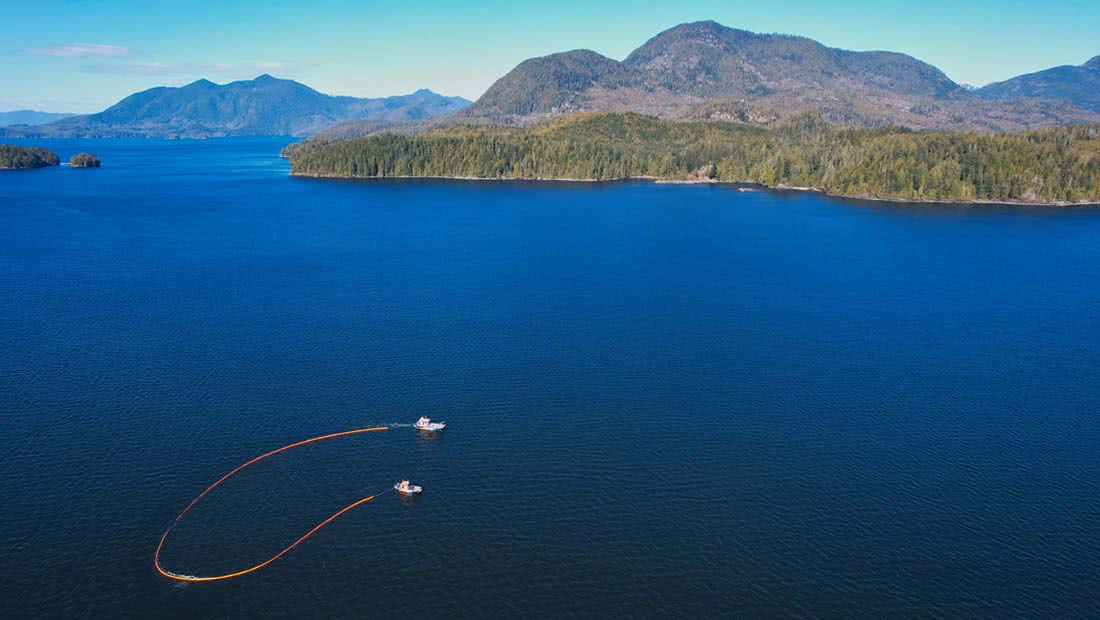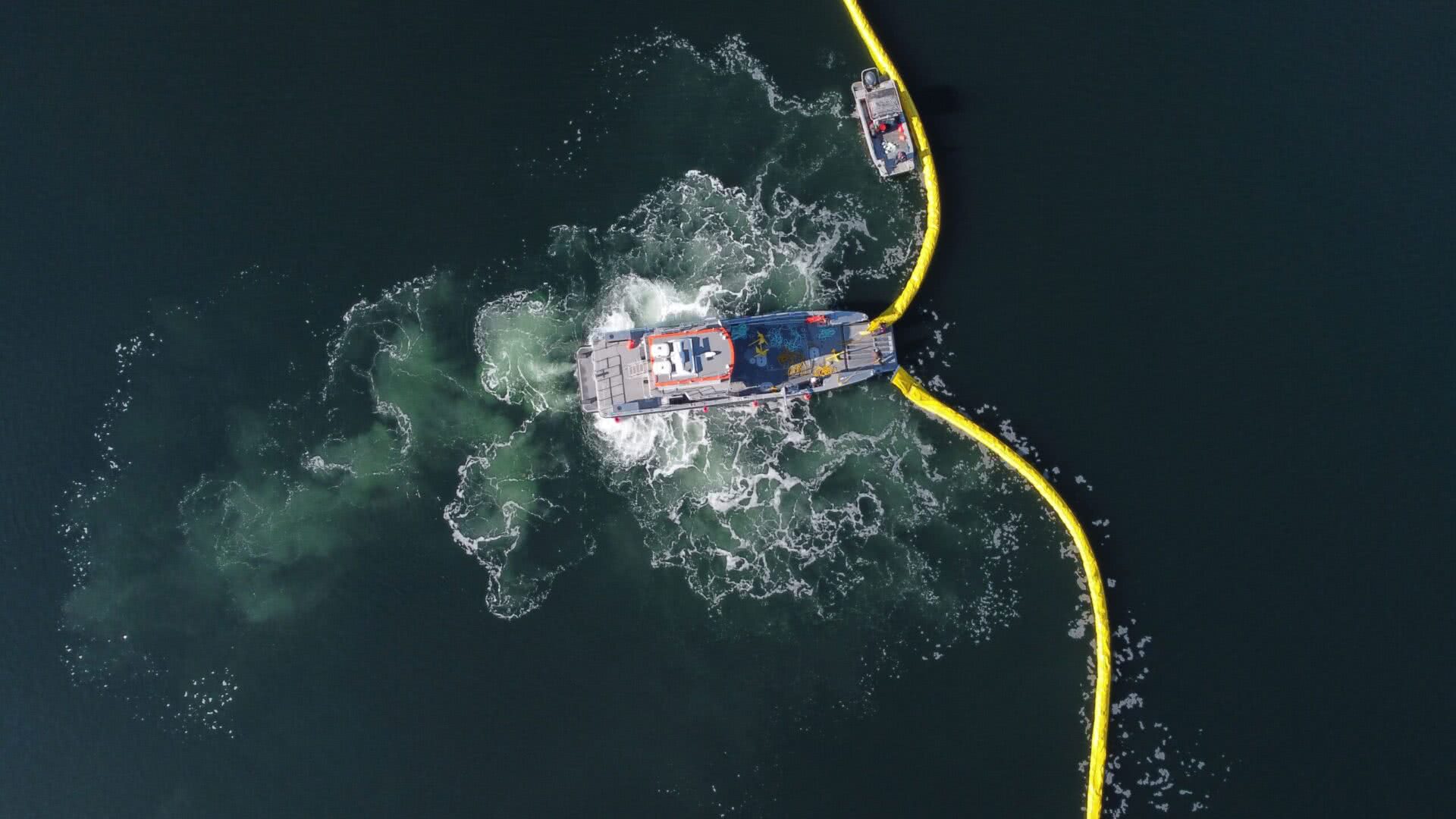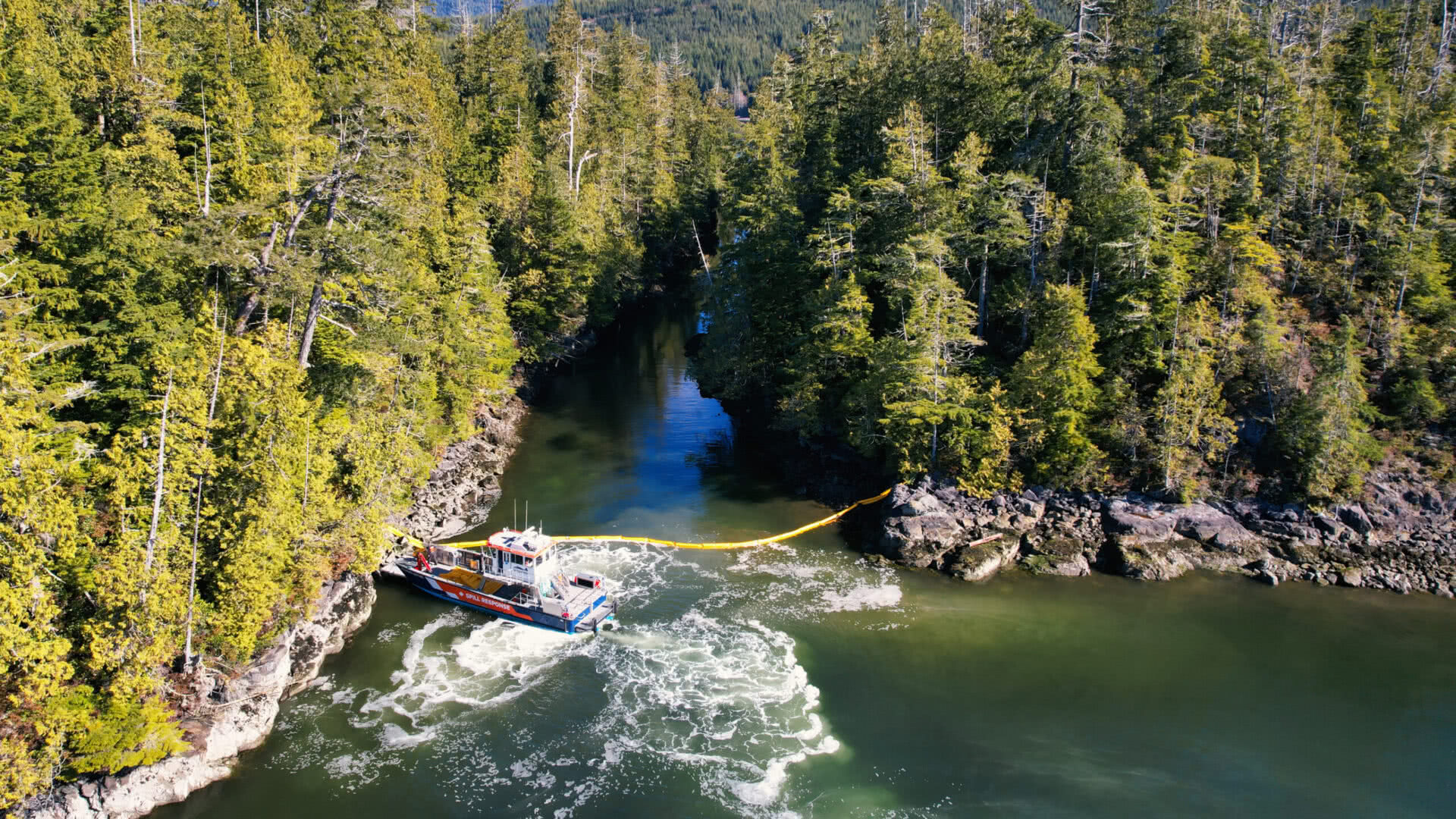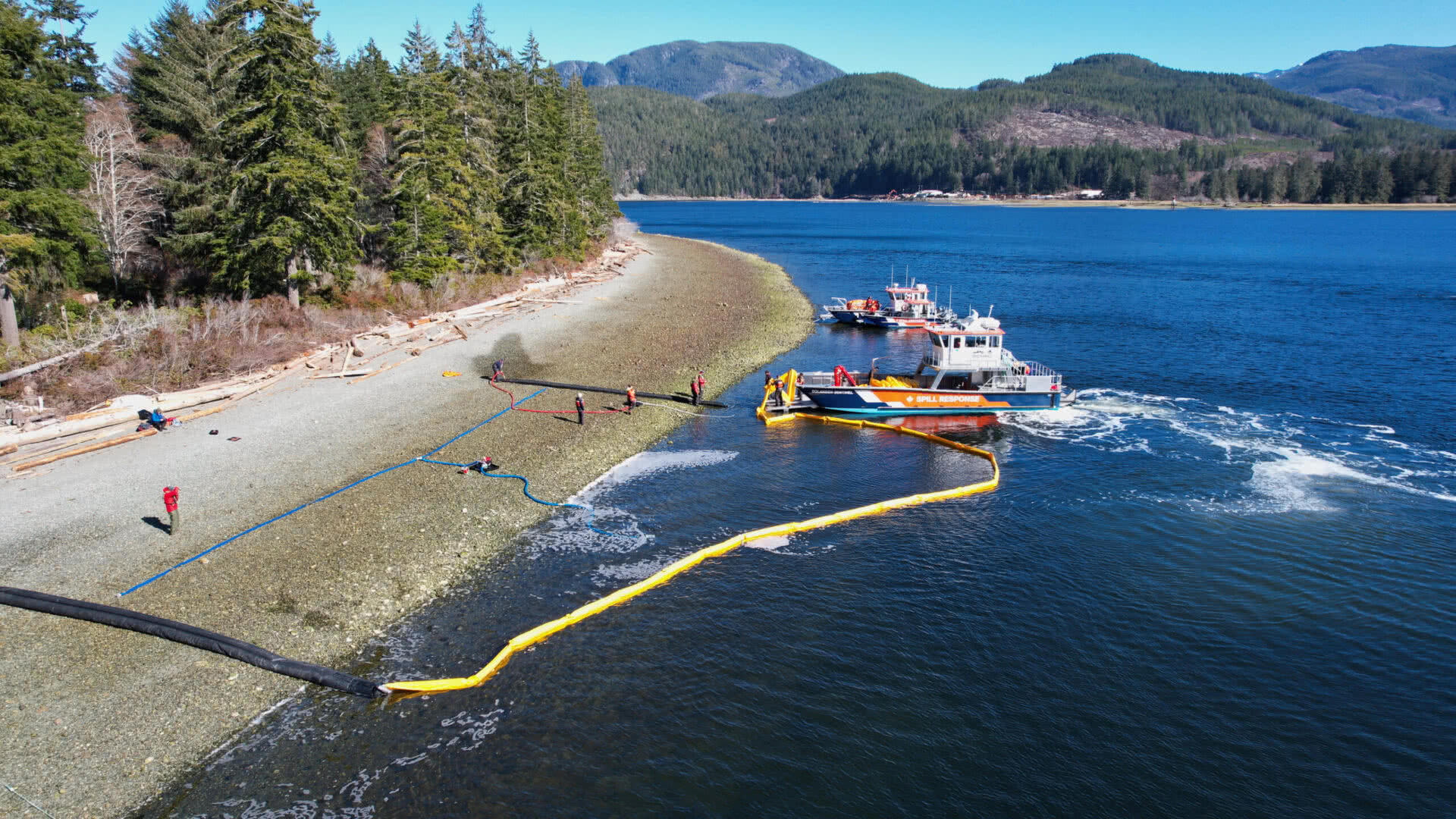
Training and Exercises
So, you saw a WCMRC vessel on the water, here are some of the things it might be doing.
Overview
Spill Response Training
Once oil is spilled, it will naturally spread, fragment, and disperse under the influence of wind, waves and currents. WCMRC trains on different tactics that may be used to reduce the impacts of the spill on the surrounding environment. These could include mechanical recovery, shoreline protection, shoreline cleanup and contractor integration.
Mechanical Recovery
The primary method for responding to marine oil spills in Canada is mechanical recovery. Skimmers will skim oil off the surface of the water and be pumped into temporary storage vessels, such as barges. Booms are used to limit the spread of oil, deflect it away from sensitive areas and collect it for recovery. For smaller amounts of oil, sorbent pads are often used. Sorbents refer to materials used to recover oil through absorption. These materials are designed to absorb oil but not water.

Shoreline Protection
Shoreline protection aims to prevent or minimize contact between oil and the shore zone. Typically, a combination of strategies, techniques and equipment are integrated into long-term operations to reduce the environmental consequences to at-risk shorelines. Strategies include removing shoreline debris before the oil washes ashore, deflecting oil away from the shore with the use of booms or other physical barriers, and trapping or collecting oil at the shoreline or on the seabed.

Shoreline Flushing
Shoreline flushing causes minimal ecological damage and removes oil quickly. Before flushing begins, a shoreline boom is deployed into the water to contain and collect oil as it is flushed from the shore. Water is then pumped from the sea through a large sprinkler system set up along the foreshore. High volumes of low-pressure water flood the shore, raising the water table. As oil rises to the surface, natural wave and tidal action flush it from the shore and into the water, where it is contained by the booms. Skimmers then recover the oil from the water’s surface, pumping it into storage vessels.

Contractor Integration
A Vessel of Opportunity (VOO) refers to a vessel whose crew is trained by WCMRC to respond to marine oil spills. A VOO can be a landing craft, tugboat, crew boat, water taxi or workboat with pre-determined towing capacity, lifting ability and/or available deck space. WCMRC’s marine contractor network consists of trained VOOs that provide support, valuable insights on local waters, and additional technical skills that enhance WCMRC’s response capability.
Vessels and crews accepted into the VOO program participate in an orientation session, receive spill response training at least once each year, and are compensated for their time. VOO members may also be asked to take part in spill response exercises.
